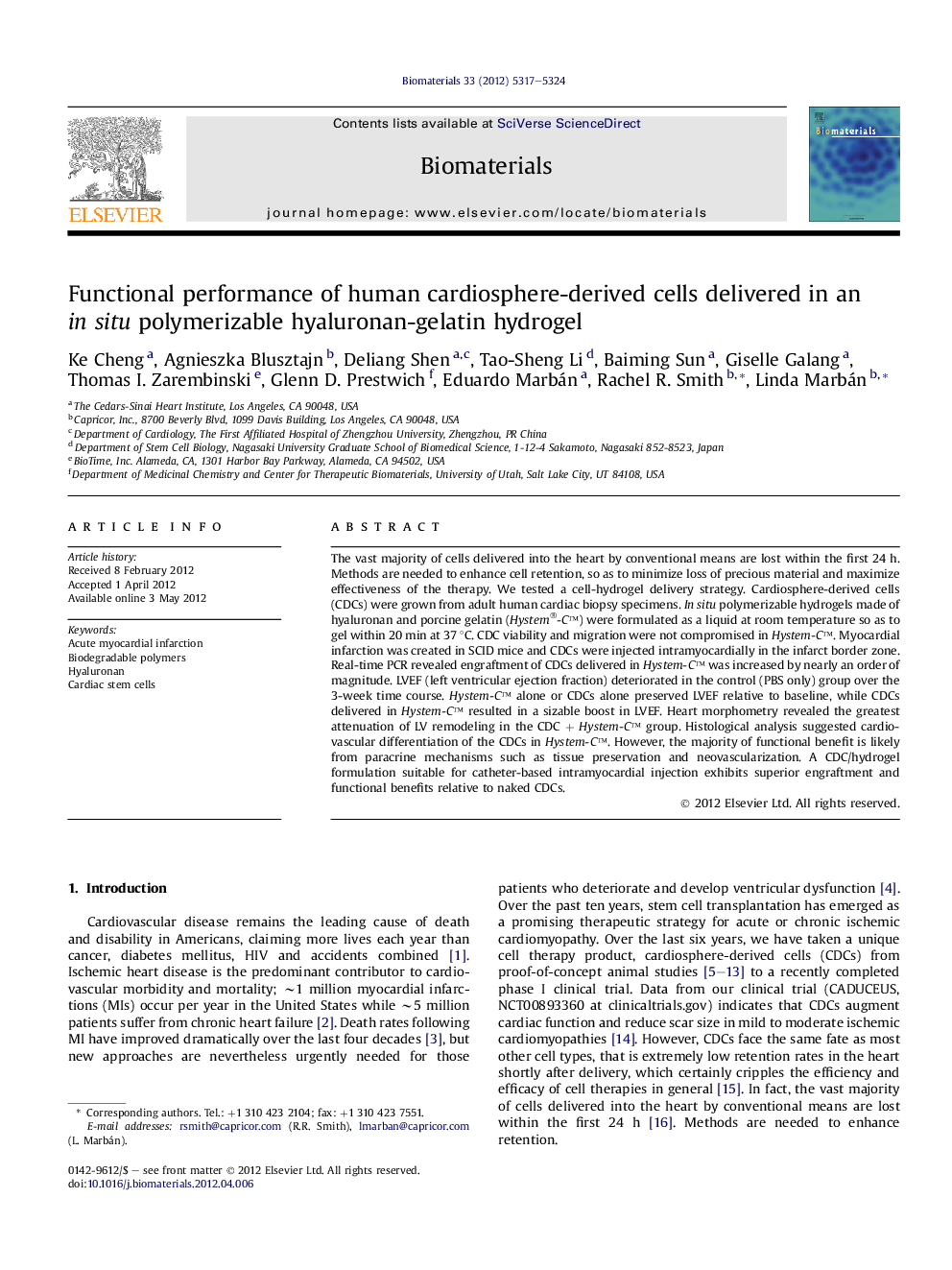| Article ID | Journal | Published Year | Pages | File Type |
|---|---|---|---|---|
| 10229517 | Biomaterials | 2012 | 8 Pages |
Abstract
The vast majority of cells delivered into the heart by conventional means are lost within the first 24 h. Methods are needed to enhance cell retention, so as to minimize loss of precious material and maximize effectiveness of the therapy. We tested a cell-hydrogel delivery strategy. Cardiosphere-derived cells (CDCs) were grown from adult human cardiac biopsy specimens. In situ polymerizable hydrogels made of hyaluronan and porcine gelatin (Hystem®-Câ¢) were formulated as a liquid at room temperature so as to gel within 20 min at 37 °C. CDC viability and migration were not compromised in Hystem-Câ¢. Myocardial infarction was created in SCID mice and CDCs were injected intramyocardially in the infarct border zone. Real-time PCR revealed engraftment of CDCs delivered in Hystem-C⢠was increased by nearly an order of magnitude. LVEF (left ventricular ejection fraction) deteriorated in the control (PBS only) group over the 3-week time course. Hystem-C⢠alone or CDCs alone preserved LVEF relative to baseline, while CDCs delivered in Hystem-C⢠resulted in a sizable boost in LVEF. Heart morphometry revealed the greatest attenuation of LV remodeling in the CDC + Hystem-C⢠group. Histological analysis suggested cardiovascular differentiation of the CDCs in Hystem-Câ¢. However, the majority of functional benefit is likely from paracrine mechanisms such as tissue preservation and neovascularization. A CDC/hydrogel formulation suitable for catheter-based intramyocardial injection exhibits superior engraftment and functional benefits relative to naked CDCs.
Related Topics
Physical Sciences and Engineering
Chemical Engineering
Bioengineering
Authors
Ke Cheng, Agnieszka Blusztajn, Deliang Shen, Tao-Sheng Li, Baiming Sun, Giselle Galang, Thomas I. Zarembinski, Glenn D. Prestwich, Eduardo Marbán, Rachel R. Smith, Linda Marbán,
